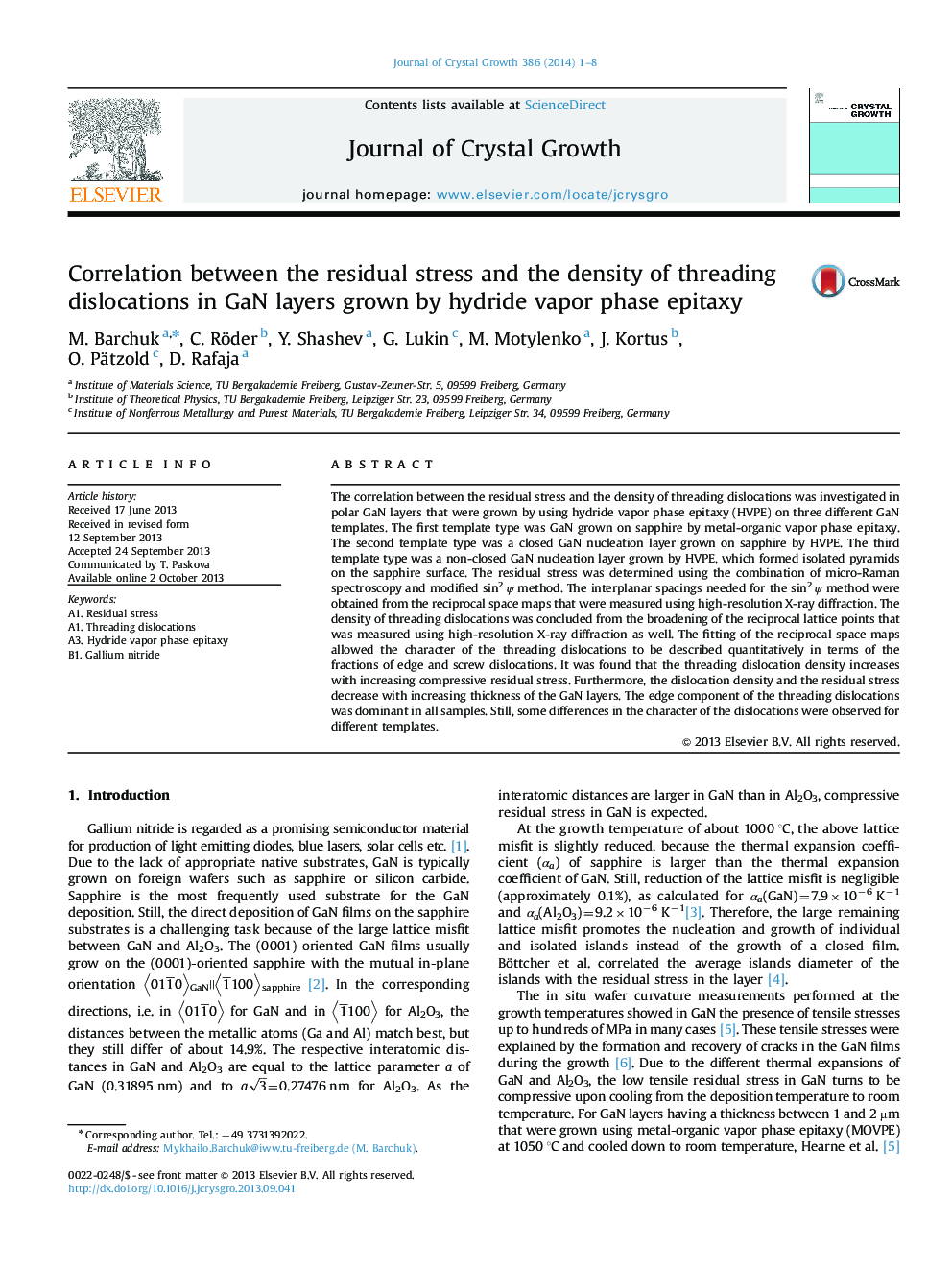| Article ID | Journal | Published Year | Pages | File Type |
|---|---|---|---|---|
| 8151792 | Journal of Crystal Growth | 2014 | 8 Pages |
Abstract
The correlation between the residual stress and the density of threading dislocations was investigated in polar GaN layers that were grown by using hydride vapor phase epitaxy (HVPE) on three different GaN templates. The first template type was GaN grown on sapphire by metal-organic vapor phase epitaxy. The second template type was a closed GaN nucleation layer grown on sapphire by HVPE. The third template type was a non-closed GaN nucleation layer grown by HVPE, which formed isolated pyramids on the sapphire surface. The residual stress was determined using the combination of micro-Raman spectroscopy and modified sin2Â Ï method. The interplanar spacings needed for the sin2Â Ï method were obtained from the reciprocal space maps that were measured using high-resolution X-ray diffraction. The density of threading dislocations was concluded from the broadening of the reciprocal lattice points that was measured using high-resolution X-ray diffraction as well. The fitting of the reciprocal space maps allowed the character of the threading dislocations to be described quantitatively in terms of the fractions of edge and screw dislocations. It was found that the threading dislocation density increases with increasing compressive residual stress. Furthermore, the dislocation density and the residual stress decrease with increasing thickness of the GaN layers. The edge component of the threading dislocations was dominant in all samples. Still, some differences in the character of the dislocations were observed for different templates.
Keywords
Related Topics
Physical Sciences and Engineering
Physics and Astronomy
Condensed Matter Physics
Authors
M. Barchuk, C. Röder, Y. Shashev, G. Lukin, M. Motylenko, J. Kortus, O. Pätzold, D. Rafaja,
